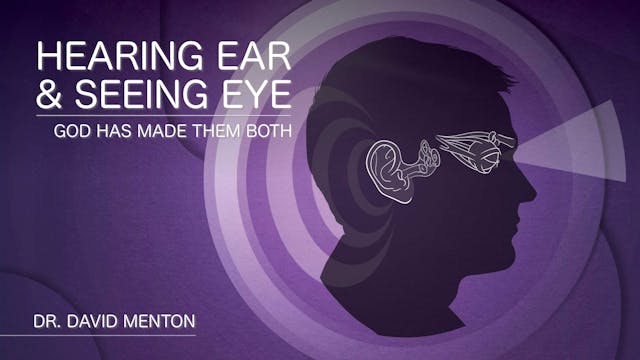Dr. David Menton explores bone biology and unveils the elaborate design of our amazing skeletal system. Could all this have come together by dumb luck over millions of years, or was all this intricacy orchestrated by our Creator's intentional design? You'll look at your skeleton in a whole new light when you learn about the amazing inner workings and functions of our bones.
Did you know that the bones of our bodies are a perfect blend of both strength and flexibility? If they weren't strong enough they couldn't support us and we'd be unable to walk around. on the other hand, if they weren't flexible enough they'd shatter when we went for a jog. our life depends on a boney skeleton that is an engineering marvel.
Bones may not look very lively but, if you examine them at the cellular level, you will see that they are hives of activity. Some cells are creating bone while others are busily destroying it. As they work in perfect tandem, the bone grows and is shaped as needed. You'll see evidence of this via Dr. Menton's state-of-the-art microscope as it projects the viewing field onto a screen allowing everyone to see.
Dr. Menton holds a PhD from Brown University and served as a professor at Washington University for 34 years. He retired as an associate professor emeritus and now serves with Answers in Genesis. https://answersingenesis.org/bios/david-menton/
Photo by StockSnap from Pixabay
https://pixabay.com/photos/skeleton-medical-technology-2561573/
Up Next in Anatomy with Dr. Menton
-
Hearing Ear & Seeing Eye (2003)
This unique talk received a standing ovation at Creation 2003. Anatomist Dr. David Menton takes you on a journey into the marvelous intricacies of the human ear and eye, which has the clear stamp of the Creator and leaves skeptics speechless.
-
Fearfully & Wonderfully Made (2020)
Have you ever marveled over a newborn child? We stand in awe at the detail of their tiny features, fingers, and toes. As we consider the miracle of life, we may ask, When does life begin?‚
Dr. David Menton explains the development of an infant from the embryo to birth. Explore the progressive se...



1 Comment